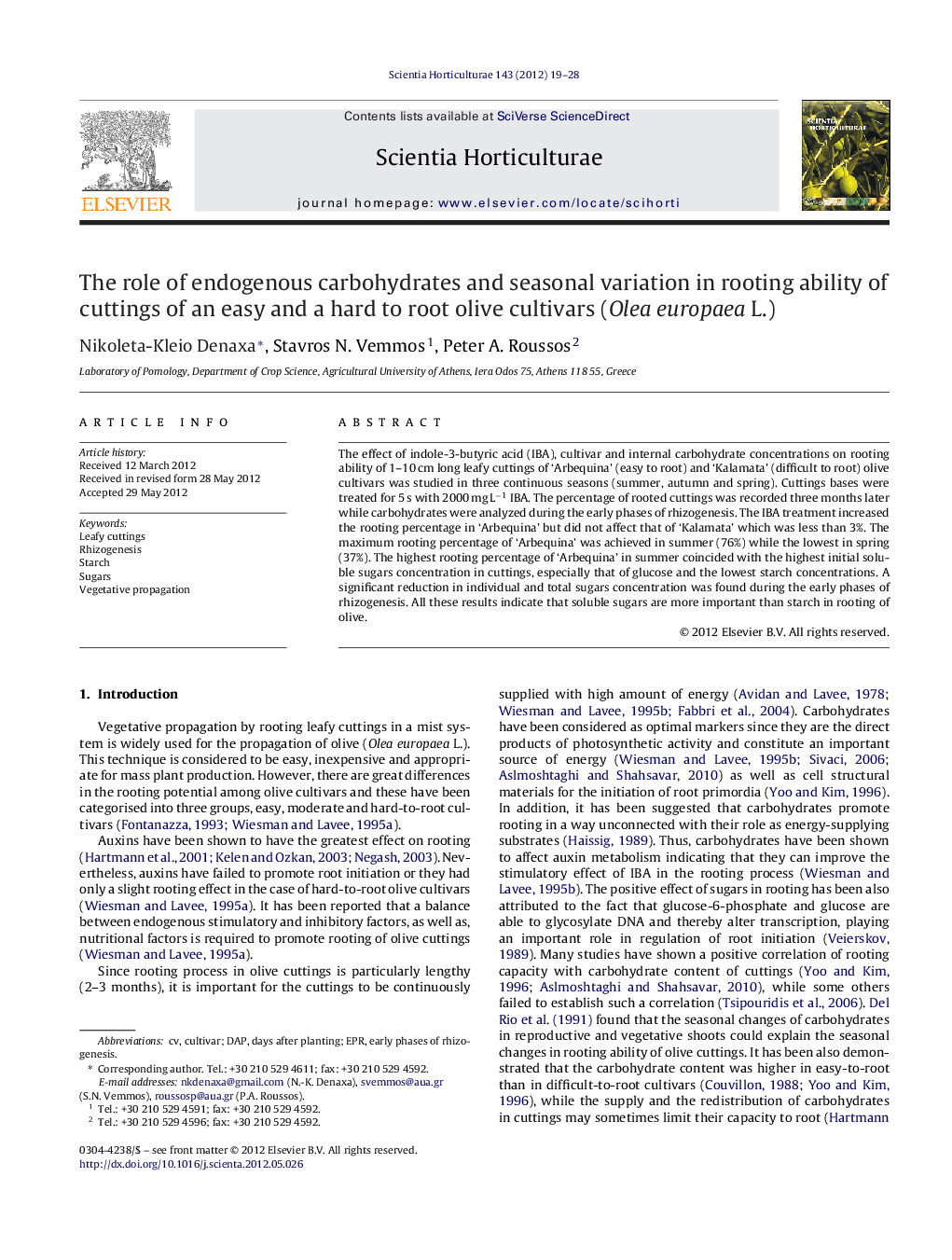| Article ID | Journal | Published Year | Pages | File Type |
|---|---|---|---|---|
| 4567609 | Scientia Horticulturae | 2012 | 10 Pages |
The effect of indole-3-butyric acid (IBA), cultivar and internal carbohydrate concentrations on rooting ability of 1–10 cm long leafy cuttings of ‘Arbequina’ (easy to root) and ‘Kalamata’ (difficult to root) olive cultivars was studied in three continuous seasons (summer, autumn and spring). Cuttings bases were treated for 5 s with 2000 mg L−1 IBA. The percentage of rooted cuttings was recorded three months later while carbohydrates were analyzed during the early phases of rhizogenesis. The IBA treatment increased the rooting percentage in ‘Arbequina’ but did not affect that of ‘Kalamata’ which was less than 3%. The maximum rooting percentage of ‘Arbequina’ was achieved in summer (76%) while the lowest in spring (37%). The highest rooting percentage of ‘Arbequina’ in summer coincided with the highest initial soluble sugars concentration in cuttings, especially that of glucose and the lowest starch concentrations. A significant reduction in individual and total sugars concentration was found during the early phases of rhizogenesis. All these results indicate that soluble sugars are more important than starch in rooting of olive.
► Glucose and mannitol appear to be more important than starch in adventitious root formation. ► ‘Arbequina’ had higher sucrose, glucose, mannitol and total sugars than ‘Kalamata’. ► Seasonal variation in rooting ability was observed, with summer being the best rooting period. ► Auxin application was ineffective in stimulating rooting in ‘Kalamata’ cuttings. ► Auxin treatment did not have any considerable effect on sugar concentrations during the early phases of rhizogenesis.
